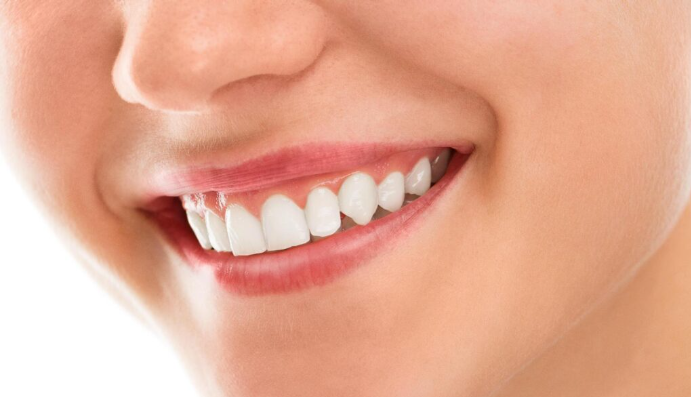Gingivoplasty Expert in Perumbakkam
Your Trusted Partner in Gingivoplasty
Gingivoplasty is a dental procedure aimed at reshaping and contouring the gum tissue to improve its appearance and function. Whether you’re seeking to address gum overgrowth, uneven gum lines, or other aesthetic concerns, our team is here to provide you with top-notch care and guidance throughout the gingivoplasty process.

Understanding Gingivoplasty
What is Gingivoplasty?
Gingivoplasty is a dental procedure that involves reshaping and contouring the gum tissue to improve its appearance and function. This may include removing excess gum tissue, reshaping uneven gum lines, and creating a more harmonious gum contour around the teeth. Gingivoplasty can enhance the aesthetics of the smile, improve oral hygiene by making it easier to clean the teeth and gums, and address functional issues such as gum recession or overgrowth. The procedure is typically performed using local anesthesia to ensure patient comfort, and modern techniques allow for precise and minimally invasive treatment. Overall, gingivoplasty aims to achieve a healthier, more balanced gumline and enhance the overall appearance of the smile.
Who needs Gingivoplasty?
Gingivoplasty may be recommended for individuals who experience:
Excessive Gum Tissue: People with overgrown or enlarged gums (gingival hypertrophy) may benefit from gingivoplasty to remove the excess tissue and create a more proportional gumline.
Uneven Gumline: Individuals with irregular or asymmetrical gumlines may opt for gingivoplasty to reshape the gums and achieve a more uniform appearance.
Gum Recession: Those with gum recession, where the gums have pulled away from the teeth, exposing the tooth roots, may undergo gingivoplasty to cover and protect the exposed roots.
Functional Issues: Gingivoplasty can address functional concerns such as difficulty cleaning between teeth due to excessive gum tissue or interference with proper bite alignment.
Aesthetic Concerns: People who are dissatisfied with the appearance of their smile due to the shape, size, or position of their gums may choose gingivoplasty to improve the overall aesthetics of their smile.
What are the benefits of Gingivoplasty?
Improved Gum Aesthetics: Gingivoplasty can enhance the appearance of the smile by reshaping and contouring the gum tissue to create a more balanced and aesthetically pleasing gumline.
Enhanced Smile Symmetry: By addressing uneven or asymmetrical gumlines, gingivoplasty can help achieve greater symmetry and harmony between the teeth and gums.
Increased Confidence: A more attractive gumline can boost self-esteem and confidence, allowing individuals to smile more freely and feel better about their appearance.
Improved Oral Hygiene: Reshaping the gum tissue can make it easier to clean between teeth and along the gumline, improving oral hygiene and reducing the risk of gum disease and tooth decay.
Correction of Functional Issues: Gingivoplasty can address functional problems such as gum recession or interference with proper bite alignment, improving overall oral health and function.
Minimally Invasive: Modern gingivoplasty techniques are minimally invasive, resulting in less discomfort, shorter recovery times, and faster healing compared to traditional surgical approaches.
Long-lasting Results: With proper oral hygiene and regular dental care, the results of gingivoplasty can be long-lasting, providing lasting improvements to the appearance and health of the gums.
What happens during the procedure?
- Anesthesia: The dentist administers local anesthesia to numb the gums and ensure the patient’s comfort during the procedure.
- Gum Reshaping: Using specialized instruments, the dentist carefully removes excess gum tissue and reshapes the gumline to achieve the desired contour and symmetry.
- Contouring: The dentist may also contour the gum tissue around individual teeth to create a more uniform appearance and improve overall aesthetics.
- Smoothing: Any rough or uneven areas of the gum tissue are smoothed out to create a natural and harmonious gumline.
- Final Evaluation: Once the desired gum contour is achieved, the dentist evaluates the results to ensure symmetry and proper alignment with the teeth.
- Post-operative Care: The patient receives post-operative instructions, including guidelines for oral hygiene, dietary restrictions, and follow-up appointments to monitor healing and address any concerns.
What are the risks involved?
- Bleeding
- Swelling
- Discomfort
- Infection
- Gum Sensitivity
- Uneven Gumline
- Over-removal of Tissue
- Recurrence of Gum Issues
- Allergic Reaction to Anesthesia or Medications
- Rare Complications (e.g., nerve damage, gum recession)
What are the disadvantages of Gingivoplasty?
- Potential Discomfort During Recovery
- Risk of Post-operative Complications (e.g., bleeding, infection)
- Gum Sensitivity or Pain
- Possibility of Uneven Gumline
- Over-removal of Gum Tissue
- Recurrence of Gum Issues
- Long-term Maintenance Requirements
- Cost of the Procedure
- Time Commitment for Treatment and Recovery
- Individual Variability in Results
Frequently Asked Question on Gingivoplasty
Local anesthesia is typically used during gingivoplasty to minimize discomfort during the procedure. Some patients may experience mild discomfort or sensitivity afterward, which can be managed with pain medications.
Recovery time varies, but most patients can expect to return to normal activities within a few days to a week after the procedure. Full healing may take several weeks.
With proper healing, the grafted gum tissue should blend seamlessly with surrounding tissue, resulting in a natural appearance.
The longevity of results depends on factors such as oral hygiene, underlying gum health, and adherence to post-operative care instructions. With proper maintenance, the results can be long-lasting.
Initially, a soft diet may be recommended to avoid irritation to the surgical site. As healing progresses, normal eating habits can be resumed.
Yes, there are various techniques for gingivoplasty, including laser gingivoplasty, scalpel gingivoplasty, and electrosurgery, each with its advantages and considerations.
